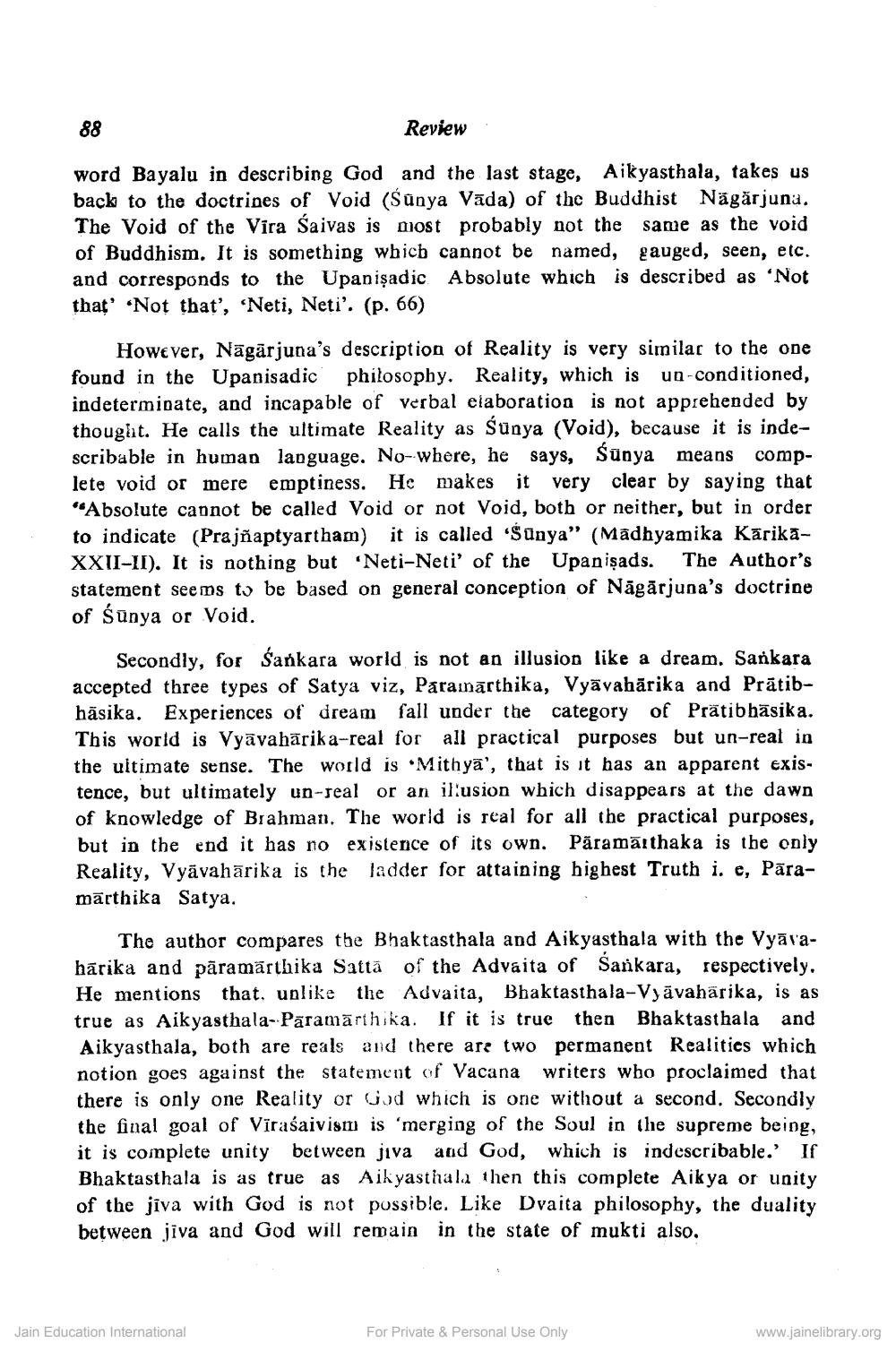________________
88
Review:
word Bayalu in describing God and the last stage, Aikyasthala, takes us back to the doctrines of Void (Śünya Vāda) of the Buddhist Nagarjuna. The Void of the Vira Saivas is niost probably not the same as the void of Buddhism. It is something which cannot be named, gauged, seen, etc. and corresponds to the Upanişadic Absolute which is described as 'Not that' 'Not that', Neti, Neti'. (p. 66)
However, Nāgārjuna's description of Reality is very similar to the one found in the Upanisadic philosophy. Reality, which is un-conditioned, indeterminate, and incapable of verbal elaboration is not apprehended by thought. He calls the ultimate Reality as Sünya (Void), because it is indescribable in human language. No-where, he says, Sünya means complete void or mere emptiness. He makes it very clear by saying that "Absolute cannot be called Void or not Void, both or neither, but in order to indicate (Prajñaptyartham) it is called 'Sünya” (Mādhyamika KārikaXXII-II). It is nothing but Neti-Neti' of the Upanişads. The Author's statement seems to be based on general conception of Nāgārjuna's doctrine of Śūnya or Void.
Secondly, for Sankara world is not an illusion like a dream. Sankara accepted three types of Satya viz, Parainārthika, Vyävahārika and Prātibhāsika. Experiences of dream fall under the category of Prätibbāsika. This world is Vyāvahärika-real for all practical purposes but un-real in the ultimate sense. The world is Mithya', that is it has an apparent existence, but ultimately un-seal or an illusion which disappears at the dawn of knowledge of Brahman. The world is real for all the practical purposes, but in the end it has no existence of its own. Päramärthaka is the only Reality, Vyāvahārika is the ladder for attaining highest Truth i. e, Pāramārthika Satya.
The author compares the Bhaktasthala and Aikyasthala with the Vyāvahārika and pāramārthika Sattā of the Advaita of Sankara, respectively. He mentions that, unlike the Advaita, Bhaktasthala-Vjāvahärika, is as true as Aikyasthala-Pāramārthika. If it is true then Bhaktasthala and Aikyasthala, both are reals and there are two permanent Realities which notion goes against the statement of Vacana writers who proclaimed that there is only one Reality or God which is one without a second. Secondly the final goal of Virasaivism is 'merging of the Soul in the suprem it is complete unity between jiva and God, which is indescribable. If Bhaktasthala is as true as Aikyasthala then this complete Aikya or unity of the jiva with God is not possible. Like Dvaita philosophy, the duality between jiva and God will remain in the state of mukti also.
Jain Education International
For Private & Personal Use Only
www.jainelibrary.org




